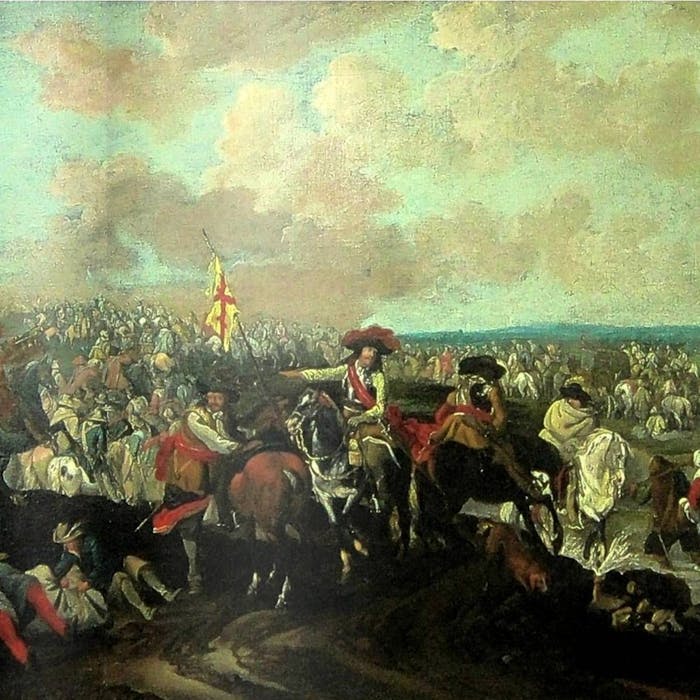
Battle of Sedgemoor - a failed coup
The Battle of Sedgemoor marked the climactic failure of the Monmouth Rebellion in the 17th century, wherein the Duke of Monmouth (an illegitimate son of Charles II) unsuccessfully rallied supporters in the South West of England to try to overthrow King James II.
Taking place in 1685, it relied on the ‘element of surprise’ for any hope of success. Monmouth had planned an unforeseen nocturnal attack on an enemy encampment near Bridgwater, Somerset. However, he was reliant on untrained troops, and their route to attack included a dangerous moor with steep-sided and difficult to cross drainage ditches (known locally as rhynes). This resulted in a delay, and when the first men across startled enemy patrols the Royalist forces were alerted, and the rebels were outflanked.
About 500 of Monmouth's troops were captured and imprisoned in St Mary’s Parish Church, Westonzoyland, and others hunted and shot in ditches (where they hid). Others were hanged from roadside gibbets. Monmouth did escape the battlefield, and fled to the south coast, disguised as a peasant. He was caught in Ringwood, Hampshire, detained at the Tower of London, and was sentenced to beheading by axe.
Novelist Daniel Defoe, who wrote Robinson Crusoe, had taken part in the battle. He was severely fined, and lost much of his land and wealth.
The battle is one of those popularly brought back to life by re-enactors.
Further reading
Links to external websites are not maintained by Bite Sized Britain. They are provided to give users access to additional information. Bite Sized Britain is not responsible for the content of these external websites.
